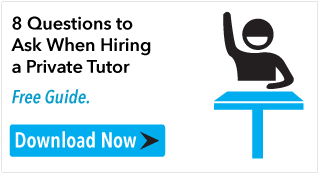Math is a subject that most students either love or hate. In either case, preparing thoroughly for the Math section of the ACT is important in order to do your best. If...
ACT Math Strategy Series [Part 2 of 3]

Math is a subject that most students either love or hate. In either case, preparing thoroughly for the Math section of the ACT is important in order to do your best. If math is not your strongest subject, building a solid foundation of understanding will be important for maintaining a decent overall score. If math comes easily for you, reviewing will still be important in order to fill in the gaps in your knowledge, especially if you want your score to truly reflect your ability. Either way, this series of posts gives you valuable strategies that will help you maximize your score. This post is the second of a three part series that looks at strategies for acing the ACT Math section.
Strategy #4: Budget Your Time
Since the ACT is a timed test, using your time and focus effectively will have a huge effect on the outcome. Sixty minutes for sixty questions may seem like plenty of time, but the questions cover a range of difficulties, and some will take much longer than a minute, which means that others will have to take much less. For example, suppose you take two minutes to complete one problem. Then you will have to complete two problems in only thirty seconds to make up for this time. If it took you three minutes to answer one problem, you would have to answer three more in only twenty seconds each to stay on par. And a six-minute problem would cost you six ten-second problems! So, if a problem is taking too much time or draining your ability to focus, don’t be afraid to skip it and come back to it if you have time. Since all of the questions count the same regardless of their difficulty, the more you are able to answer the better.
Strategy #5: Factor In Order Of Difficulty
One factor to take into account in budgeting your time is that the difficulty of the problems tends to increase as you go along, so you should be able to complete the earlier problems much faster. If you complete early problems in less than a minute, or even better, in less than 30 seconds, you are essentially “banking” time that you can then use for the later, more challenging problems. A good target to aim for is having two thirds of the problems completed when your time is halfway up.
Strategy #6: Read Questions And Answers Carefully
As on all multiple-choice tests, make sure that you clearly understand what each question is asking for, and be wary of choosing intermediate steps as answers. Just because you are proceeding with a calculation and come across one of the answer choices doesn’t mean it is the correct one; make sure you have completed the problem all the way to arrive at the final answer.
Dane Dormio is an online tutor and blogger with an unconventional approach to education. Visit his tutoring blog at www.synergy-tutoring.com.

